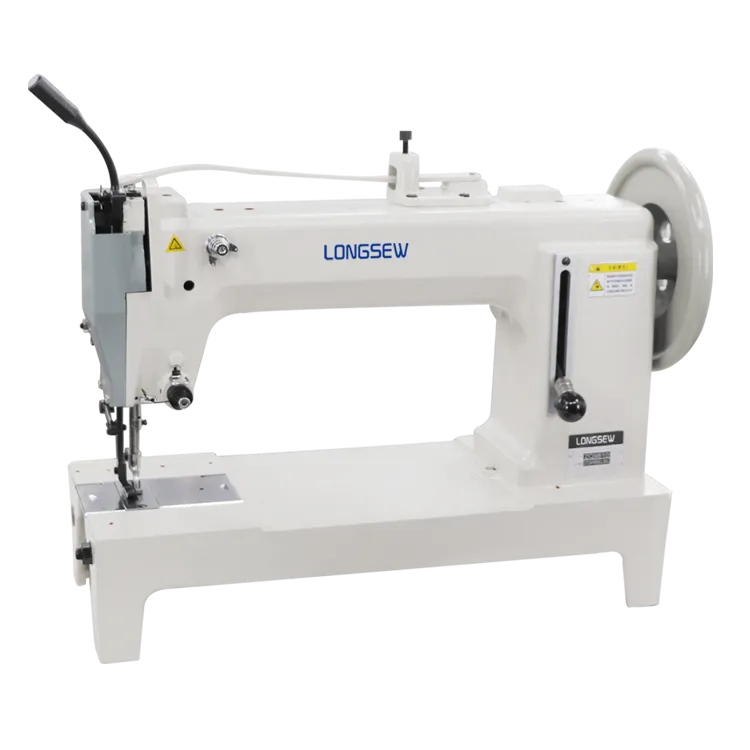how to use the double needle in sewing machine
How to Use the Double Needle in a Sewing Machine
Sewing is an art that combines creativity and technical skill, and using a double needle can elevate your projects to the next level. Whether you’re looking to create professional-looking hems, decorative stitching, or simply add some flair to your sewing projects, mastering the double needle technique is essential. In this article, we will walk you through the steps of using a double needle in a sewing machine, along with tips to ensure that you achieve the best results.
What is a Double Needle?
A double needle is essentially two needles attached to a single shaft. This design allows you to sew two parallel lines of stitching at once, which can give your projects a stylish finish. Double needles come in various widths and sizes, allowing for different types of stitching and patterns. It's important to choose the right needle for your fabric; generally, a 2.0 mm or 4.0 mm spacing between the needles works well for most sewing applications.
Preparing Your Sewing Machine
Before you start sewing with a double needle, you need to make some adjustments to your sewing machine
1. Choose the Right Needle Select a double needle compatible with your sewing machine. Check your machine's manual if you're unsure about the dimensions or types that work best.
2. Change the Needle Turn off your sewing machine and use a screwdriver to replace your current needle with the double needle. Ensure it is inserted correctly, with the flat side facing the back of the machine.
3. Insert Two Spools of Thread Unlike regular sewing, using a double needle means you’ll have to thread two spools of thread. Place one spool on the standard spool pin and the other on a secondary pin, or if your machine doesn’t have one, you can use a spool holder for the second thread.
4. Threading the Machine Thread the machine as usual, but make sure to take both threads through the tension discs. When you reach the needle area, thread each needle individually. Make sure that the threads don’t tangle and that each needle is getting its own thread.
5. Use a Suitable Presser Foot Some sewing machines may require a specific presser foot for double needles. If your machine has a compatible double needle foot, use it to avoid snagging or misalignment.
Sewing with a Double Needle
how to use the double needle in sewing machine

Now that your machine is ready, you can begin sewing
1. Set Your Machine Settings Adjust your sewing machine settings for a straight stitch. Avoid using a zigzag stitch as it can lead to needle breakage. Set your stitch length according to your fabric type; typically, a medium stitch length works best.
2. Test on a Scrap Fabric Before you start on your main project, it’s wise to do a test run. Use a piece of scrap fabric to confirm that your double stitching looks even and that the needle doesn’t skip stitches.
3. Sewing Technique As you sew, guide the fabric evenly through the machine, ensuring it’s not pulled too tight or sagging. The result should be two parallel lines of stitching, which looks neater and can provide extra strength.
4. Finishing Touches Once you finish sewing, don’t forget to secure your threads with backstitching at the beginning and end of your seams, just as you would with single needle stitching.
Tips for Success
- Fabric Choice Lightweight to medium-weight fabrics work best with double needles. Heavier fabrics may cause the needles to break or result in uneven stitches.
- Avoid Stretching Fabric Be mindful not to stretch the fabric while sewing. This can cause distortion in the stitching line.
- Regular Maintenance Keep your sewing machine well-maintained to prevent any issues with threading or stitching.
- Experiment with Decorative Threads You can use a variety of thread types, including metallic, to create stunning decorative effects with your double needle.
Using a double needle in your sewing machine can add a professional edge to your projects. Whether you're hemming pants, creating quilt patterns, or simply wanting to experiment with new techniques, the double needle is a versatile tool. With practice, you’ll be able to create beautiful, intricate designs that are sure to impress. Happy sewing!
-
Boost Production Efficiency with a Pattern Sewing MachineNewsAug.29,2025
-
Industrial Excellence with the Best Heavy Duty Sewing MachineNewsAug.29,2025
-
Precision and Power with the Best Pattern Sewing MachineNewsAug.29,2025
-
Reliable Bulk Packaging Starts With the Right FIBC Sewing MachineNewsAug.29,2025
-
Advanced Packaging Solutions: Elevate Productivity with Jumbo Bag Sewing Machine and Industrial Stitching EquipmentNewsAug.29,2025
-
High-Performance Solutions for Bulk Packaging: FIBC Sewing Machine and MoreNewsAug.29,2025
-
Maximize Efficiency with an Industrial Cylinder Arm Sewing MachineNewsAug.28,2025


























